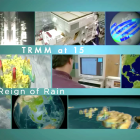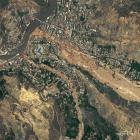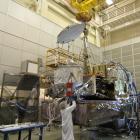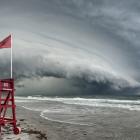-
NASA and the Community, Collaborative Rain, Hail, and Snow Network (CoCoRaHS) run by Colorado State University, Fort Collins, invite the public to participate in a free webinar on February 13th 2013 to promote citizen science that involves rain and snow measurements across the United States. CoCoRaHS is a citizen scientist network with more than 16,000 volunteers nationwide that encourages volunteers of all ages to record and monitor precipitation using accurate, low-cost rain gauges.
-
GPM is proud to announce the follow-up to our popular Extreme Weather Photo Contest! Winter winds blow in cold air, snow, ice, freezing rain, and a slew of other cold weather phenomena. What is winter like in your area or favorite vacation spot? Post your coolest photos of winter weather and we'll pick the best ones to feature on the NASA Precipitation Measurement Missions websites! UPDATE: Submissions accepted from 1/7/13 -> 2/4/13
-
Weather forecasts have come a long way, but almost every season there's a snowstorm that seems to come out of nowhere, or one that's forecast as 'the big one' that turns out to be a total bust. In the last ten years, scientists have shown that it is possible to detect falling snow and measure surface snowpack information from the vantage point of space. But there remains much that is unknown about the fluffy white stuff.
-
On Tuesday, Dec. 4, 2012, the Global Precipitation Measurement (GPM) mission Core Observatory began thermal vacuum testing at NASA's Goddard Space flight Center in Greenbelt, Md. Thermal vacuum testing is part of GPM's environmental test program to ensure that the satellite is ready for the harsh conditions of space.
-
When it rains it pours, goes the saying, and for the last 15 years, the data on tropical rainfall have poured in. NASA's Tropical Rainfall Measuring Mission (TRMM) was launched on Nov. 27, 1997, and for the last decade and a half has enabled precipitation science that has had far reaching applications across the globe.
-
A recent NASA study published in the October issue of the Journal of Hydrometeorology compared satellite rain data from NASA’s Tropical Rainfall Measurement Mission (TRMM) to landslides in central eastern China, Central America and the Himalayan Arc, three regions with diverse climates and topography where rainfall-triggered landslides are frequent and destructive hazards to the local populations. The work is part of an ongoing effort to catalog worldwide rainfall-triggered landslides—one of the world's lesser known but often catastrophic natural hazards. Locating them is a...
-
NASA's GPM Core Observatory satellite went through its first complete comprehensive performance test (CPT), beginning on Oct. 4, 2012 at NASA's Goddard Space Flight Center in Greenbelt, Md. The testing ran twenty-four hours, seven days a week and lasted ten days as the entire spacecraft was put through its paces.
-
Thank you to everyone who submitted photos to the first installment of our GPM Extreme Weather Photo Competition. We loved all of your entries and thoroughly appreciate your participation! The GPM Photo Competition Committee is happy to announce our top 5 picks. We’ll be sending the submitters NASA bags and GPM stickers. Please stay tuned for additional contests and activities.










